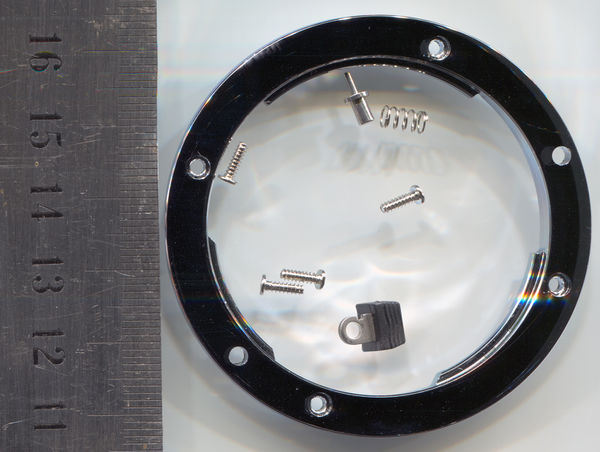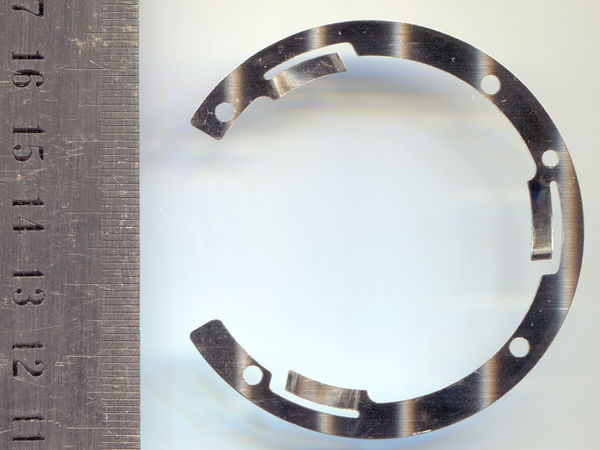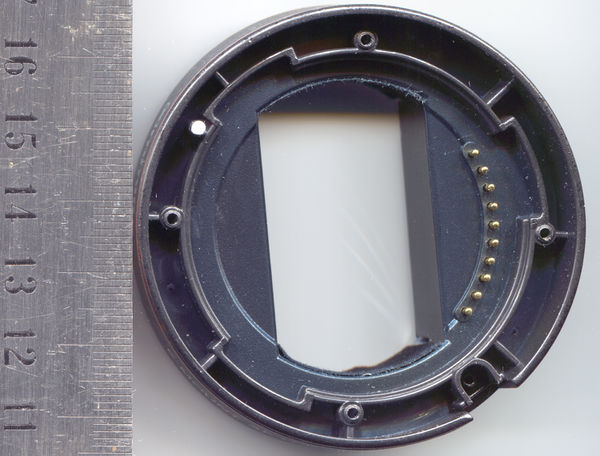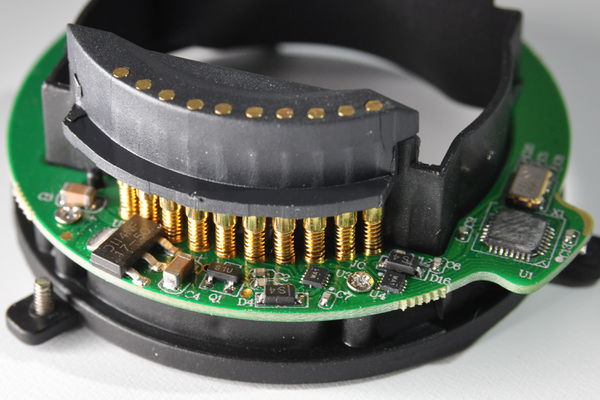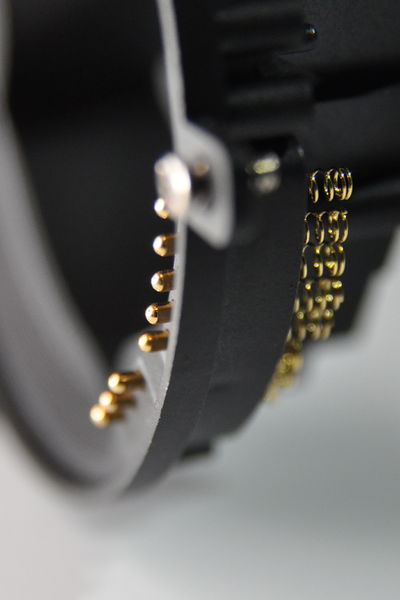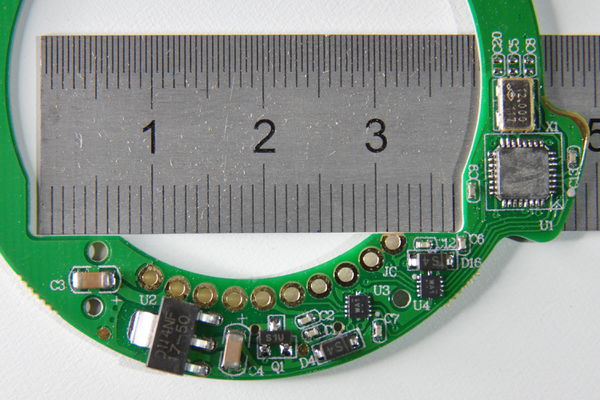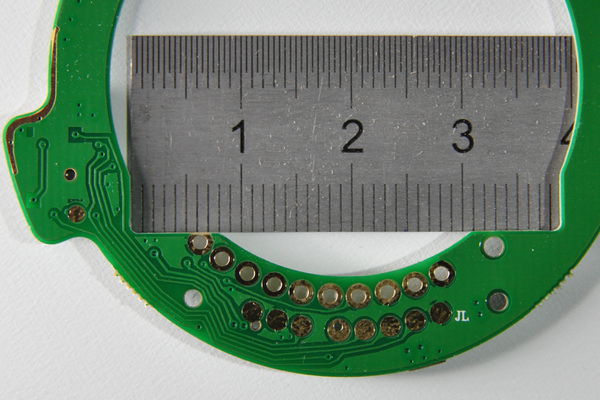Difference between revisions of "Lens Mounts"
| (13 intermediate revisions by 3 users not shown) | |||
| Line 1: | Line 1: | ||
For components related to [[AXIOM Beta]] see - Parts:[https://wiki.apertus.org/index.php/10-Enclosures_and_Associated_Mechanical_Parts Enclosures and Associated Mechanical Parts]. | |||
=Overview of Lensmounts= | =Overview of Lensmounts= | ||
http://en.wikipedia.org/wiki/Lens_mount | http://en.wikipedia.org/wiki/Lens_mount | ||
This page contains information about the different lens mounts and the protocols used to communicate with the attached lenses. | |||
== E Mount== | |||
Seems to be a good choice because there are adapters available for almost every camera/lens type for reasonable cost. Even active mounts for Canon EF, etc. | |||
http://en.wikipedia.org/wiki/Sony_E-mount | http://en.wikipedia.org/wiki/Sony_E-mount | ||
Specs: | |||
* Outer diameter 46.1mm | * Outer diameter 46.1mm | ||
* Flange focal distance is very short: 18mm | |||
* Frame size APS-C, 35mm | * Frame size APS-C, 35mm | ||
Cons | Pros: | ||
* Short flange focal distance allows mechanical adapters to cover pretty much any lens mount out there | |||
* widely adopted | |||
Cons: | |||
* not an open standard | * not an open standard | ||
* licensing necessary for lens communication protocol | * licensing necessary for lens communication protocol -> reverse engineering required | ||
* | * using stack adapters reduces the accuracy and ruggedness of the whole system | ||
[https://github.com/LexOptical/E-Mount LexOptical E-Mount on Github] - A work in progress reverse engineering of E-Mount communication protocol. | |||
[http://www.sony.net/SonyInfo/News/Press/201102/11-018E/index.html Sony opens E-mount specifications.] Seems we are on the safe side with using an E-mount adapter... | [http://www.sony.net/SonyInfo/News/Press/201102/11-018E/index.html Sony opens E-mount specifications.] Seems we are on the safe side with using an E-mount adapter... | ||
| Line 28: | Line 36: | ||
[[File:E_Mount_Bayonet_2-small.jpg | 600px]] | [[File:E_Mount_Bayonet_2-small.jpg | 600px]] | ||
[[File:E_Mount_Bayonet_3-small.jpg | 600px]] | |||
Full 4800 DPI scans available for download at: http://files.apertus.org/AXIOM-Beta/e-mount-scans.zip | Full 4800 DPI scans available for download at: http://files.apertus.org/AXIOM-Beta/e-mount-scans.zip | ||
Screws are 1.6mm outer thread diameter so could be M1.6, screw total length is 5,75mm | |||
=== E-Mount to EOS Adapter *Inside* === | === E-Mount to EOS Adapter *Inside* === | ||
| Line 53: | Line 65: | ||
We can replace this board with our own adapter board to connect to the cameras I/O's | We can replace this board with our own adapter board to connect to the cameras I/O's | ||
===Passive EF Mount=== | |||
===Active Canon EF Mount=== | |||
#body <-> lens communication protocol: http://www.magiclantern.fm/forum/index.php?topic=3796.0 | |||
#pins and contacts: http://en.wikipedia.org/wiki/Canon_EF_lens_mount | |||
#EF-S protocol: http://pickandplace.wordpress.com/2011/10/05/canon-ef-s-protocol-and-electronic-follow-focus/ | |||
===Nikon F-Mount=== | |||
[[File:Nikon-bayonet01.jpg|600px]] | |||
Picture of Nikon F bayonet mount components. | |||
Measured Bayonet Thickness: 1.3mm | |||
#general information: http://en.wikipedia.org/wiki/Nikon_F-mount | |||
#body <-> lens communication protocol: https://nikonhacker.com/viewtopic.php?f=8&t=1437 | |||
#technical drawing of F-mout http://en.wikipedia.org/wiki/Nikon_F-mount#mediaviewer/File:Nikon_F-mount_mechDwg.png | |||
===Micro Four Thirds Mount=== | |||
#body <-> lens communication protocol: http://preamp.org/revenge/four-thirds-communication-protocol | |||
==Open standard Mount== | ==Open standard Mount== | ||
| Line 68: | Line 103: | ||
[https://pickandplace.wordpress.com/2011/10/05/canon-ef-s-protocol-and-electronic-follow-focus Electronic follow focus experiment] | [https://pickandplace.wordpress.com/2011/10/05/canon-ef-s-protocol-and-electronic-follow-focus Electronic follow focus experiment] | ||
---- | |||
[[Category:Hardware]] | [[Category:Hardware]] | ||
[[Category:Lenses]] | |||
[[Category:Lens Mounts]] | |||
[[Category:Canon]] | |||
[[Category:Sony]] | |||
Latest revision as of 04:05, 10 January 2019
For components related to AXIOM Beta see - Parts:Enclosures and Associated Mechanical Parts.
1 Overview of Lensmounts
http://en.wikipedia.org/wiki/Lens_mount
This page contains information about the different lens mounts and the protocols used to communicate with the attached lenses.
1.1 E Mount
Seems to be a good choice because there are adapters available for almost every camera/lens type for reasonable cost. Even active mounts for Canon EF, etc.
http://en.wikipedia.org/wiki/Sony_E-mount
Specs:
- Outer diameter 46.1mm
- Flange focal distance is very short: 18mm
- Frame size APS-C, 35mm
Pros:
- Short flange focal distance allows mechanical adapters to cover pretty much any lens mount out there
- widely adopted
Cons:
- not an open standard
- licensing necessary for lens communication protocol -> reverse engineering required
- using stack adapters reduces the accuracy and ruggedness of the whole system
LexOptical E-Mount on Github - A work in progress reverse engineering of E-Mount communication protocol.
Sony opens E-mount specifications. Seems we are on the safe side with using an E-mount adapter...
1.1.1 E-Mount Bayonet Scans
Full 4800 DPI scans available for download at: http://files.apertus.org/AXIOM-Beta/e-mount-scans.zip
Screws are 1.6mm outer thread diameter so could be M1.6, screw total length is 5,75mm
1.1.2 E-Mount to EOS Adapter *Inside*
Inside of our E-mount to EOS adapter sample
µC Board to translate from Sony E to Canon EOS
EOS contacts with springs on the PCB side
JL ... position of the EOS mount contact springs
We can replace this board with our own adapter board to connect to the cameras I/O's
1.1.3 Passive EF Mount
1.1.4 Active Canon EF Mount
- body <-> lens communication protocol: http://www.magiclantern.fm/forum/index.php?topic=3796.0
- pins and contacts: http://en.wikipedia.org/wiki/Canon_EF_lens_mount
- EF-S protocol: http://pickandplace.wordpress.com/2011/10/05/canon-ef-s-protocol-and-electronic-follow-focus/
1.1.5 Nikon F-Mount
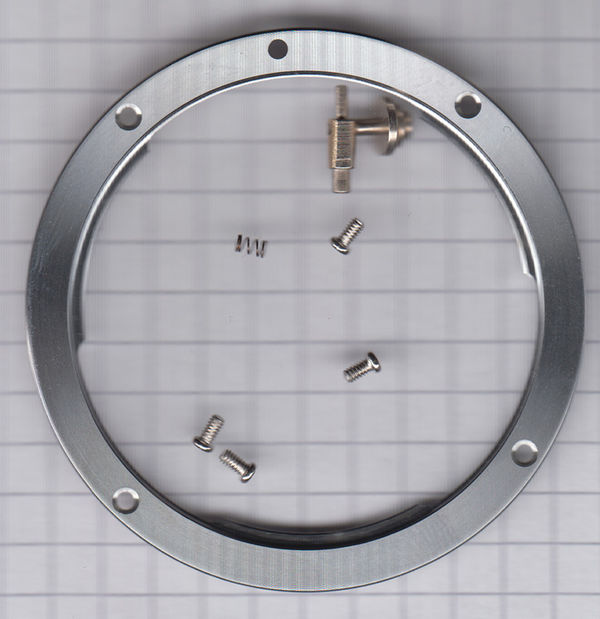 Picture of Nikon F bayonet mount components.
Picture of Nikon F bayonet mount components.
Measured Bayonet Thickness: 1.3mm
- general information: http://en.wikipedia.org/wiki/Nikon_F-mount
- body <-> lens communication protocol: https://nikonhacker.com/viewtopic.php?f=8&t=1437
- technical drawing of F-mout http://en.wikipedia.org/wiki/Nikon_F-mount#mediaviewer/File:Nikon_F-mount_mechDwg.png
1.1.6 Micro Four Thirds Mount
- body <-> lens communication protocol: http://preamp.org/revenge/four-thirds-communication-protocol
1.2 Open standard Mount
P+S Technik offers with their IMS mount an open standard. For AXIOM Beta the adapters are too expensive, but for sure an option for AXIOM Gamma.
Is there a affordable really open standard mount out there?
please add it here...
1.3 Talk with a Canon Lens
Research links for the Canon EF-S Protocol
Electronic follow focus experiment
